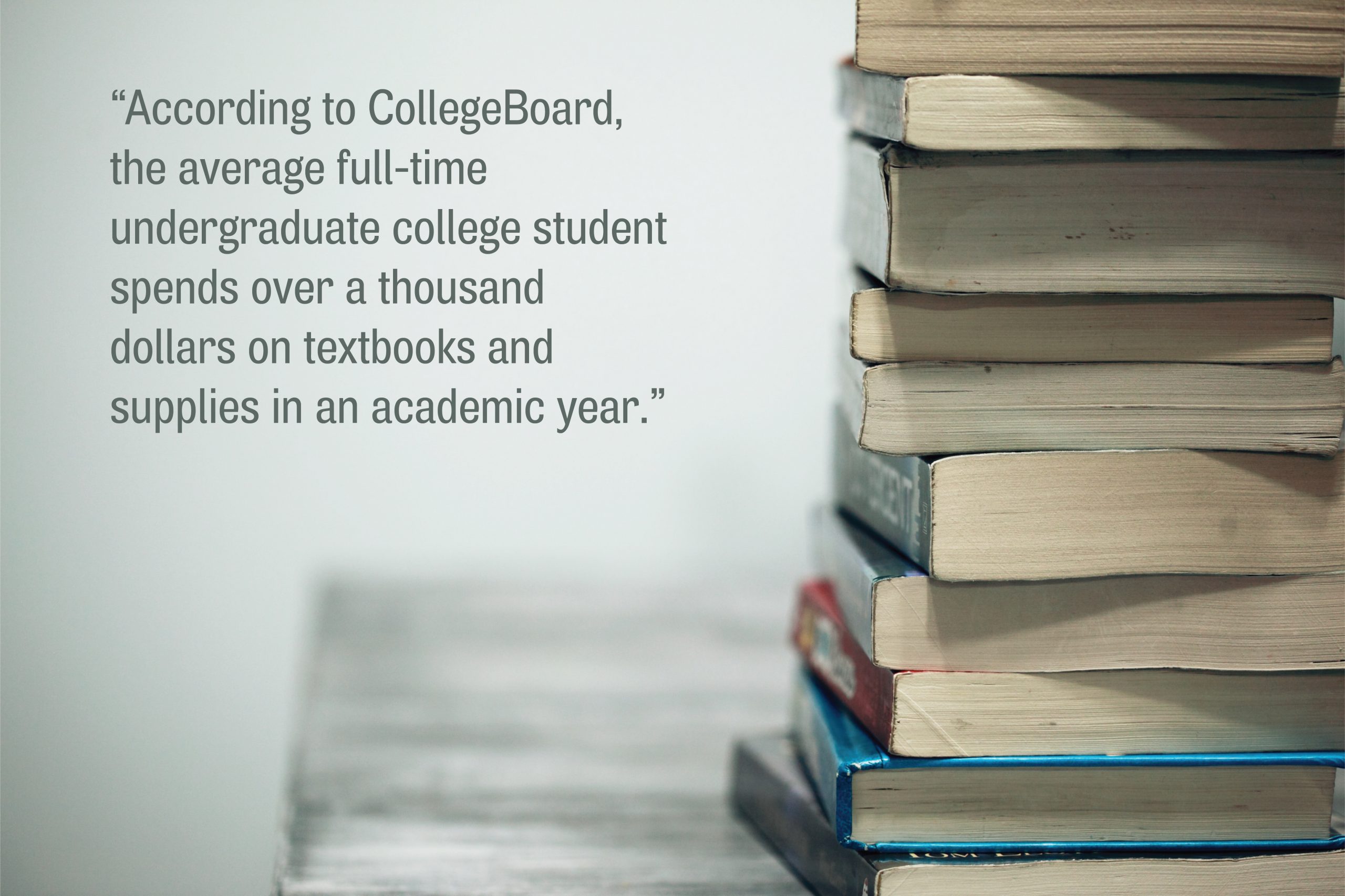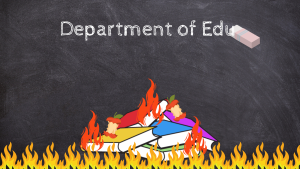Professors should look for cheaper, more accessible textbook options
College textbooks are expensive and are usually used in the short-term, even though students are forced to spend money on pricey books only found in the campus bookstore.
When I first started college, I expected to spend more money on food than textbooks; I was wrong. According to CollegeBoard, the average full-time undergraduate student spends over a thousand dollars on textbooks and supplies in an academic year.
In my first semester alone, I spent over $500 on textbooks for five classes, and this was after I searched for cheaper or even free options elsewhere. The extensive spending is in part due to certain classes requiring textbooks only available from the bookstore or online; the rest of the cost comes from alternative options that are cheaper but still relatively expensive.
There are many issues with the college textbook debate, and I’ll attempt to go over each one, but the most vexing, in my opinion, is when classes require students to buy hundreds of dollars worth of textbooks simply for them to have access to the online homework.
Let me elaborate: this issue usually pertains to language courses, which rely on online portals for course assignments and quizzes while completely disregarding the textbook that comes with the online access code. There are ways to get around expensive textbooks, but, when a class requires online access, students have no other option.
Some classes offer online textbooks, which cost less than hardcopy books, but they may be more difficult to comprehend. Research proves that reading from online books leads to less reading comprehension, which can harm students in both the short and long term. If textbooks cost less, students wouldn’t have to turn to these cheaper alternatives.
If a class doesn’t require online access, then there are four ways of acquiring the textbooks: spending an absurd amount of money at the bookstore, borrowing books for a three-week period from the library, renting or buying textbooks from a different company for less, or illegally downloading a free PDF version online.
Legally, there are issues with this route; morally, however, I see no issues. There is no reason that college students should be forced to pay hundreds of dollars for a single textbook when we are already paying $70,000 per year on tuition.
A great example of textbook price discrepancy is the textbook required for PHY 308. On the Rollins bookstore website, it costs just over $160 to buy new, while you can buy it new on Amazon for just over $45. The difference in prices is remarkable, and, though the bookstore is willing to price match, they are still losing customers to cheaper alternatives because it is more convenient for students to simply order the cheaper option.
The price of textbooks would not be quite as bothersome if it was not for the fact that most classes do not even rely on the textbook for learning. For my American Politics class in the fall semester, we were required to buy two textbooks that we had assigned reading for practically every night. I bought the textbooks and did the reading for the first couple of weeks.
Eventually, it clicked in my brain that the readings from the textbooks were just the following day’s lecture in fancier words. I already spent money on the books and it was past the date to return them, so I still did the reading. However, it was still $100 that could have gone towards my tuition. It would be nice for professors to offer a cost breakdown of textbooks on their syllabi so that students know ahead of time if they can afford the class.
I don’t expect any drastic changes to occur soon, because that would require a further look at the way capitalism impacts the cost of education. I just hope that professors will look for cheaper, while still accessible, alternatives.
The opinions on this page do not necessarily reflect those of The Sandspur or Rollins College.







Comments are closed.